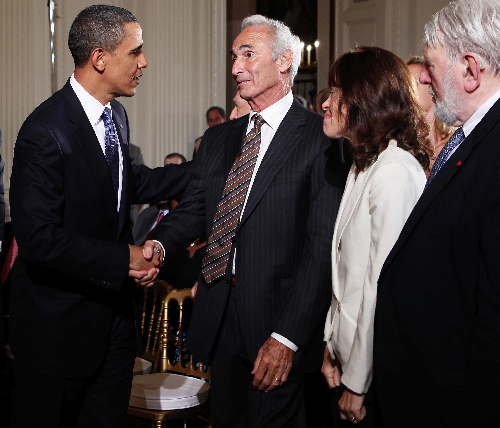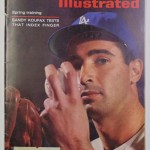Baseball hall of fame southpaw Sandy Koufax (b. 1935), whose birthday was this week on December 30, has had lots of life moments that make for the kind of documentation a genealogy researcher likes.
Though he has chosen to have a very private life after his years of sports success, his public legacy is an example of what is available to a genealogy researcher who seeks to gather information on a famous ancestor.
Here are some of the ways such records will come easy to the genealogist:
- Long life. He’s now into his eightieth year as of this week. Long life equals lots of information. Many of our relatives are living longer, which means that the genealogy researcher has lots more documentation on their lives to find.
- Name. He had a name change from Sanford Braun to Sandy Koufax when his mother married husband number two, lawyer Irving Koufax. For correct documentation when looking for name changes, the genealogy researcher has to find out if a family member changed the name formally. Documents for name changes, if filed, may be found on line in many jurisdictions.
- Sports Records. He was a basketball player in high school who became a baseball player in college. The genealogy researcher can look for the school records and sports stats. When you have a family member who played any type of sports, there are usually team photos in yearbooks and local newspapers. That’s a great place to begin.
- Genetic Genealogy. He retired because his elbow had troubling arthritis. With this information, the genealogy researcher can explore genetic genealogy and a family’s medical history through medical records, death records, and anecdotal material and in-person interviews. Has there been a genetic tendency toward arthritis in Sandy Koufax’s family? After an injury to his arm from a fall when he was getting back to base, the team doctor called the chronic aftermath “traumatic arthritis”. In this case, the genealogy researcher would likely attempt to interview team medical professionals from that time.
- Medical Records. Aside from the arthritis, Koufax had a crushed artery in his arm in 1962 that led to problems with his pitching hand. It was reported that he used an experimental medical protocol to open the artery. Records from this medical trial as well as in-person interviews with the medical experts who treated him may provide interesting information for the genealogy researcher. Tracking down medical personnel may be done by the genealogy researcher at a hospital; however, with so many changes in hospital administration, this may not be such an easy find these days.
- Place, like Brooklyn. He is from that place where so many of the famous have hailed: Brooklyn. Is there history in that New York City Borough, or what? And lots of records there, too. Brooklyn’s documents are available on line and this makes it much easier for the genealogy researcher to do get strikes.
- Religious Records. Known for his respectful choice, Koufax made baseball history when he did not play Game 1 of the 1965 World Series which fell that year on Yom Kippur, the holiest day of the Jewish calendar. For Koufax, who is known to be non-religious, synagogue records may not be the way to go. For the family history researcher, looking for records of an ancestor’s religious life may be productive. Churches, synagogues, mosques maintain records for life events including birth and coming of age ceremonies, marriages and deaths.
- Sports Records and Awards. The amount of public awards a genealogy researcher can find with Sandy Koufax is astounding. He was voted favorite athlete of the 20th century by Sports Illustrated Magazine. He was the youngest player to be inducted into the Baseball Hall of Fame in 1972. He has Strikeout Records, National League records, Cy Young Awards and a Most Valuable Player trophy. He participated in World Series and was Most Valuable Player. He has received the S. Rae Hickok Professional Athlete of the Year award, known as the Hickok Belt, as well as many other groups’ awards. All of these very public tributes are recorded in the records of the organizations as well as in print and television press reports. When one has a celebrated ancestor, lots of information is available and just has be tracked down and collected.
So, after the public information is collected, the questions that remain for the genealogy researcher to ask about Sandy Koufax go to a next level:
- What heritage information is there on his parents?
- Who was his birth father Jack Braun?
- Who was his mother Evelyn Lichtenstein?
- Who was his step-father Irving Koufax who it has been reported took him to the Yiddish Theatre regularly and supported his participation in school sports?
- Where is his step-sister Edith Koufax?
- And where are his ex-wives Anne Heath Widmark Koufax (m.1/1/1969, d. 1982) and Kimberly Francis Kole (m. 1985-1998)?
That gives us something to do. We can ruminate about the very private Sandy Koufax and his family history—or, knowing more ways to go about finding information, we can focus on our own. When you contract a professional genealogist from RecordClick, your questions about your family’s history and ancestry will be answered.








